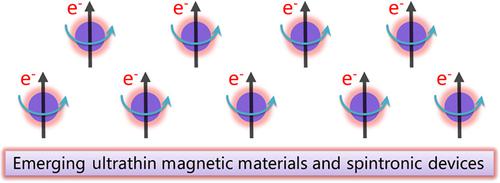当前位置:
X-MOL 学术
›
WIREs Comput. Mol. Sci.
›
论文详情
Our official English website, www.x-mol.net, welcomes your
feedback! (Note: you will need to create a separate account there.)
Computational design of two-dimensional magnetic materials
Wiley Interdisciplinary Reviews: Computational Molecular Science ( IF 16.8 ) Pub Date : 2021-05-15 , DOI: 10.1002/wcms.1545 Naihua Miao 1, 2 , Zhimei Sun 1, 2
Wiley Interdisciplinary Reviews: Computational Molecular Science ( IF 16.8 ) Pub Date : 2021-05-15 , DOI: 10.1002/wcms.1545 Naihua Miao 1, 2 , Zhimei Sun 1, 2
Affiliation

|
As a long-standing research topic in materials physics and chemistry, magnetic materials have been receiving increasing attention for their applications in spintronic devices, such as spin field-effect transistor and data-storage memory. Two-dimensional (2D) magnets are a family of emerging magnetic materials with atomically thin thickness, which can be easily integrated into heterostructural devices, providing incredible possibility for understanding 2D magnetism and great potential for applications in future ultrathin spintronic devices. Recent effort from theory, simulations and experiments has made notable progress on 2D magnets and devices, especially on 2D van der Waals materials and heterojunctions. Here theoretical advances using physical models and computational approaches on the study of new 2D magnets and devices are briefly summarized and possible directions for future investigation are extensively discussed, which may inspire growing interest on the development and applications of 2D magnets and spintronic devices.
中文翻译:

二维磁性材料的计算设计
磁性材料作为材料物理和化学领域的长期研究课题,因其在自旋电子器件中的应用而受到越来越多的关注,例如自旋场效应晶体管和数据存储存储器。二维(2D)磁体是一系列具有原子级厚度的新兴磁性材料,可以很容易地集成到异质结构器件中,为理解二维磁性提供了难以置信的可能性,并在未来的超薄自旋电子器件中具有巨大的应用潜力。最近在理论、模拟和实验方面的努力在二维磁体和器件方面取得了显着进展,特别是在二维范德华材料和异质结方面。
更新日期:2021-05-15
中文翻译:

二维磁性材料的计算设计
磁性材料作为材料物理和化学领域的长期研究课题,因其在自旋电子器件中的应用而受到越来越多的关注,例如自旋场效应晶体管和数据存储存储器。二维(2D)磁体是一系列具有原子级厚度的新兴磁性材料,可以很容易地集成到异质结构器件中,为理解二维磁性提供了难以置信的可能性,并在未来的超薄自旋电子器件中具有巨大的应用潜力。最近在理论、模拟和实验方面的努力在二维磁体和器件方面取得了显着进展,特别是在二维范德华材料和异质结方面。





















































 京公网安备 11010802027423号
京公网安备 11010802027423号